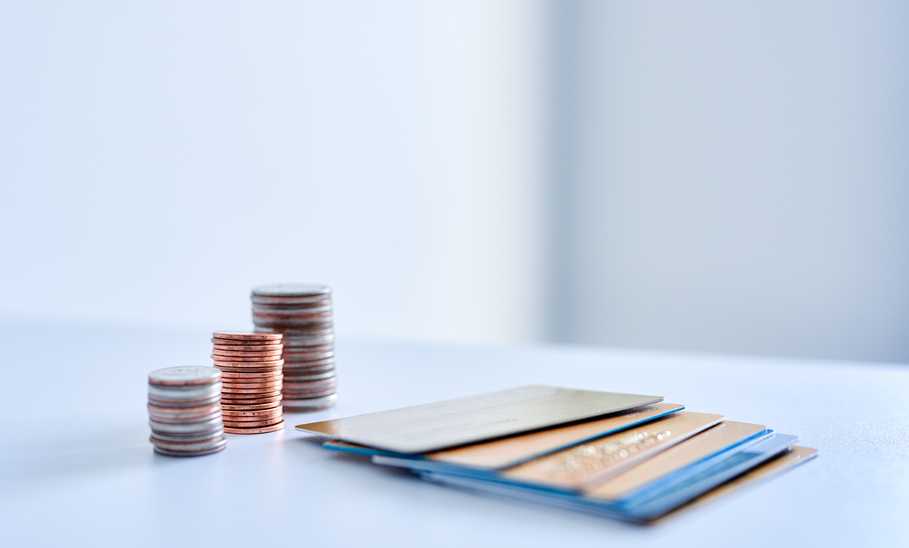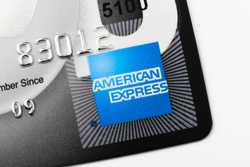What Is a Credit Card Product Change and How Does It Work?


Our evaluations and opinions are not influenced by our advertising relationships, but we may earn a commission from our partners’ links. This content is created by TIME Stamped, under TIME’s direction and produced in accordance with TIME’s editorial guidelines and overseen by TIME’s editorial staff. Learn more about it.
If you have a credit card you're not exactly thrilled with but are interested in another card from the same company, you can request a credit card product change from your card issuer. Doing so can get you a similar card with some different features and rewards and possibly a lower or nonexistent annual fee.
The best part? A product change transfers your existing account to the new card, allowing you to (1) keep your rewards balance, credit limit, and credit history from the original card while (2) usually avoiding the hard credit inquiry needed to request a new card from scratch, which could hurt your credit score.
There are rules that govern the change, including limits on eligible cards and a prohibition against switching between consumer and business cards. Read on to learn all the details and why you should (or shouldn't) try this strategy. After all, who doesn’t want one of the best credit cards out there?
A product change is when you trade one credit card for another from the same credit card company. Imagine you have the card_name and call Chase to see if you can trade it for the card_name. If Chase grants your request, this constitutes a product change.
The fact that you're trading credit cards makes a product change different from simply applying for a new credit card and canceling your old one. The card you change to will have the same credit limit and history as your old card but a different set of perks, features, and fees.
The effect of a product change on your credit score may be nonexistent or minimal; it depends on your card issuer’s policies. This is because some credit card companies allow product changes without a new hard inquiry on your credit reports, whereas others will do a hard pull when you request a switch from one of their credit card products to a new one.
Even if one is required, a hard pull on your credit reports should only produce a short-term, minimal negative impact on your scores. What matters is that a product change lets you keep your credit history. This is important, as the average length of your credit history makes up 15% of your FICO score. Closing your old credit card will likely reduce the length of your credit history.
If you have a high credit limit on the card you want to trade out, doing a product change will ensure that you keep it. This matters because it will help to keep your credit utilization ratio lower, and that makes up 30% of your FICO score. Additionally, you don't know what your new credit limit might be if you canceled your old card and applied for a new one.
Two core rules govern the world of product changes, and they are pretty universal across all credit card issuers.
If you want to request a product change, you can call the number on the back of your card. A representative will ask for information about the new card product in which you are interested.
You may be asked questions about your usage of the current card and how you plan to use the new one. Ultimately, you could learn on the phone call whether or not you are approved for the product change you want.
Remember that card issuers approve product changes at their discretion. As an example, this writer recently called American Express and asked to change from its card_name to its card_name. While both are business cards and earn the same type of rewards, American Express denied the request, despite a threat to cancel the card and go elsewhere.
There can be good reasons for trading out one credit card for another. Here are five.
Maybe you have a credit card with a high annual fee and are tired of paying it. Doing a product change to a no-annual-fee card within the same family can help you maintain the same credit history while losing the fee, though you may get reduced rewards and features.
You can trade up for a card with better advantages, such as airport lounge access, annual travel credits, or a more lucrative rewards rate for categories in which you spend a lot.
Perhaps you're tempted to close a credit card with an annual fee but don't want to lose your rewards balance. With a product change to another card, you can keep your balance.
If you have a solid history of payment on a credit card you've carried for several years, doing a product change will transfer that history to the new card. On the flip side, you can minimize the impact of a card with a bad credit history by canceling it and applying for a new one without a history.
There may also be times when a card issuer offers an incentive to switch, usually in the form of additional rewards you can earn by meeting a minimum spending requirement on the new card within the span of a few months.
There are some potential downsides that come with switching cards instead of applying for a new one. Make sure you know the consequences that could come into play before you request a product change.
The biggest downside of requesting a product change is giving up any sign-up bonus that comes with applying for the new card in the traditional way. If the bonus is worth hundreds of dollars or more, it could make a difference.
The fine print on some cards can make it difficult to get approved for new cards in the same family in the future. It can also prolong how long you may have to wait before you can reapply. For example, American Express has the following caveat in its offer terms: “You may not be eligible to receive the welcome offer, intro APRs, and intro plan fees if you have or have had this Card, the Cash Magnet® Card, the Blue Cash Preferred® Card, the Morgan Stanley Blue Cash Preferred® American Express Card or previous versions of these Cards.”
There is one alternative to a credit card product change: You can apply for the new card you want, then cancel your old one.
Canceling your old card will cause the credit history it has built up to come to an end, which can shorten the average length of your credit history and impact your credit score. You'll also have a new hard inquiry on your credit reports, which can temporarily ding your score. Still, earning a welcome bonus worth hundreds of dollars or more on the new card may be worth any temporary impact to your credit score.
Asking your card issuer to switch you to a different credit card can make sense, but you should know what you're giving up. You could forgo a significant welcome bonus by switching cards instead of applying for a new one, and you may also limit the cards for which you can get approved in the future. However, if you want to keep a card’s credit history, maintain your rewards balance, lower or get rid of an annual fee, and/or improve your card’s features, a product change could be the right choice.
Call the number on the back of your credit card to request a product change with Citi. A representative will entertain your request and let you know if a product change is possible.
As with Citi, you can only request a product change with Chase over the phone. Call the number on the back of your existing card and ask to speak with a representative.
You can request a product change with Amex over the phone or via the company's online chat tool. Identify the card you have and the one you want to acquire and state the reasons for your request.
Product changes typically leave you with the same credit limit you had before, but that shouldn’t prevent you from asking for a higher limit. Your request might be granted.
You can always dispute a credit card charge, whether you made a product change or not. Call the number on the back of your card to dispute any incorrect or false charges. You may also be able to dispute charges online through your credit card management page.
The information presented here is created by TIME Stamped and overseen by TIME editorial staff. To learn more, see our About Us page.



